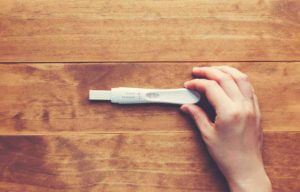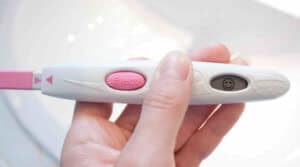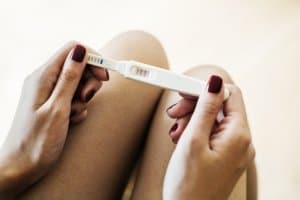Also interesting:
Table of contents
Innervation Bleeding: When Do You Speak Of Such Bleeding And What Happens With That?
Do you even notice implantation? Does implantation bleeding cause pain? And what does implantation bleeding look like. These questions cannot be answered in a generalized way, because many women do not even notice whether an implantation bleeding occurs or when it occurs.
Impact bleeding is also known as implantation bleeding or nidation bleeding. The word nidation comes from the Latin word ‘nidus’ for nest, and the word implantation also has Latin origins – ‘implantatus’ means implanted. And when is implantation? Quite simply, around 24 hours after the sperm and egg have fused, the first cell division occurs.
After fertilization, the fertilized egg makes its way down the fallopian tube toward the uterus. Once there, so-called nidation occurs – the fertilized egg nests in the lining of the uterus. However, during this process, some blood vessels may be injured. The bleeding caused by this process is completely harmless and is called implantation bleeding.
Impregnation Bleeding: When After Fertilization It Comes?
A frequently asked question about implantation bleeding: when after fertilization does it occur? The answer: implantation bleeding occurs just a few days after ovulation. When an egg has been successfully fertilized it makes its way toward the uterus. If everything goes well, implantation occurs there five to ten days later.
Implantation Bleeding: When Is It A Normal Period Or Implantation Bleeding? And How Strong Is The Difference?
The difference in length is the most important factor that can be used to distinguish between nidation bleeding and a period. A period lasts on average four to seven days, whereas implantation bleeding is usually much shorter and lasts only one to two days. Implantation bleeding and color can vary. In the case of implantation bleeding, the color can have different shades depending on the woman. Menstrual bleeding often takes on a dark red to brownish color as the period progresses. Spotting also often has a brownish hue. Implantation bleeding, on the other hand, usually has a light red hue.
Do You Notice The Implantation By The Fact That You Get Implantation Bleeding?
As mentioned above, small injuries to blood vessels in the uterus or the lining of the uterus can occur during implantation – in some cases, this can result in heavy implantation bleeding. This bleeding can vary in severity, and the particular course varies completely from woman to woman. In most women, however, the implantation bleeding is usually so light that it is not felt at all.
Implantation Bleeding – How Strong Can It Be? And What Is The Color Of The Implantation Bleeding?
In many cases, nidation bleeding is very weak and exclusively inside the body, so that the affected women do not feel it at all. Only in some cases does heavy implantation bleeding cause bright red blood to appear – which is often mistaken for a short interlude.
Implantation & Symptoms
Implantation: What symptoms indicate that it is an implantation bleeding?
During Implantation, The Following Symptoms Are Particularly Common:
- Frequent urination: if you suddenly need to visit the toilet more often, the reason could be the beginning of pregnancy .
- Increased appetite and hunger attacks are also among the typical symptoms that can occur during pregnancy – so it is quite possible that implantation bleeding is the cause.
- Cramps, pulling or slight pain in the abdominal area: as with a normal period, similar symptoms also occur with implantation. If the abdominal cramps do not subside in the further course, this could also indicate other health causes. For example, an inflamed appendix or bladder infection can cause symptoms similar to those experienced during implantation.
- Tiredness and fatigue: If you suddenly feel tired all the time, you should consider what could be causing this – occupational stress, decreasing light in the cold season or possibly an implantation bleeding.
- Tension in the breasts or discoloration of the nipples can also be an indication of implantation bleeding.
- In many women, implantation bleeding leads to digestive disorders, which can manifest themselves as constipation. But the exact opposite, i.e. diarrhea, can also be an indication of pregnancy.
- Sensitivity to smell, nausea and vomiting can also be indicative of implantation and its symptoms. When is implantation? And what does implantation bleeding look like?
Here is a brief overview of the most frequently asked questions again:












